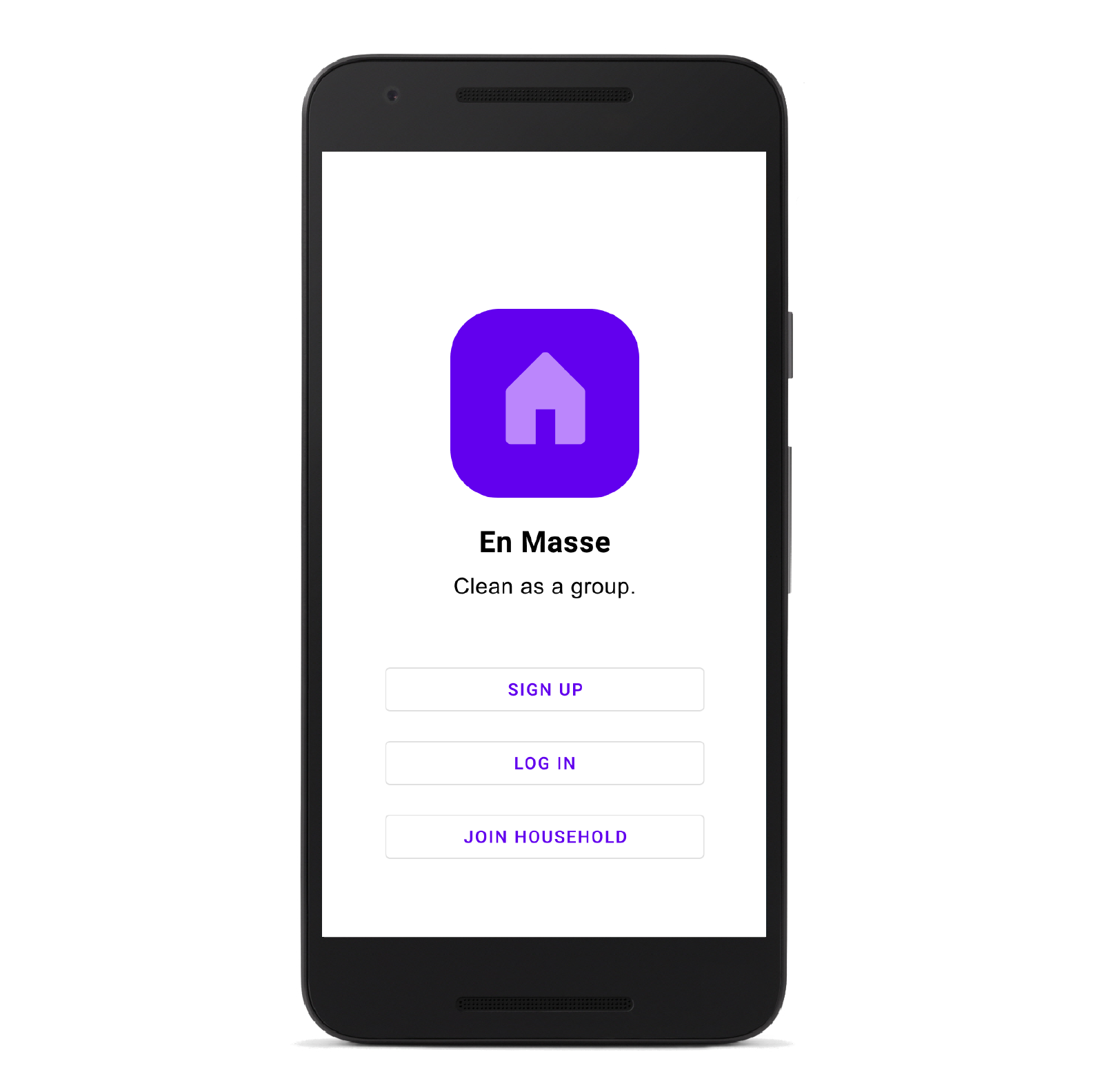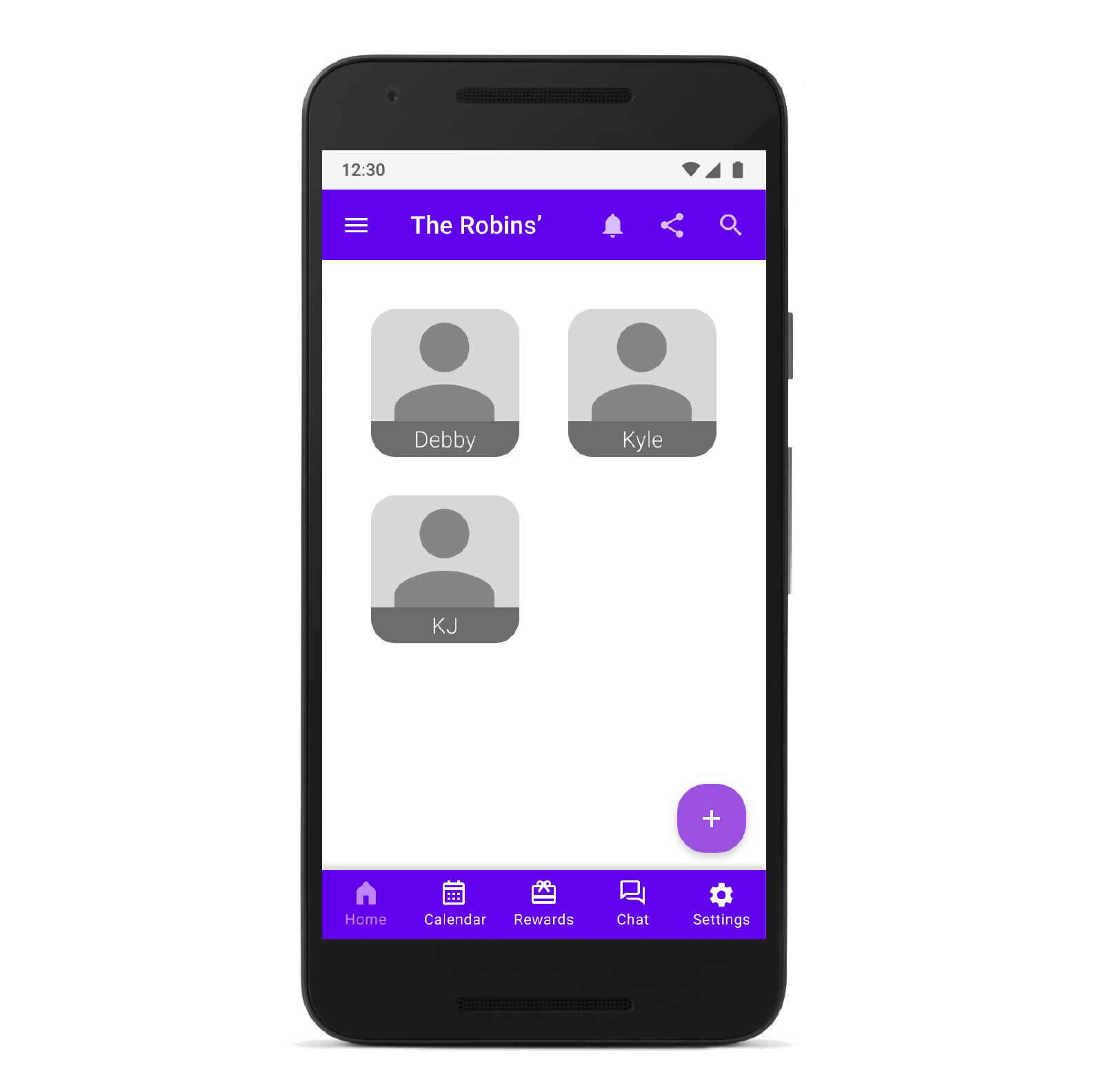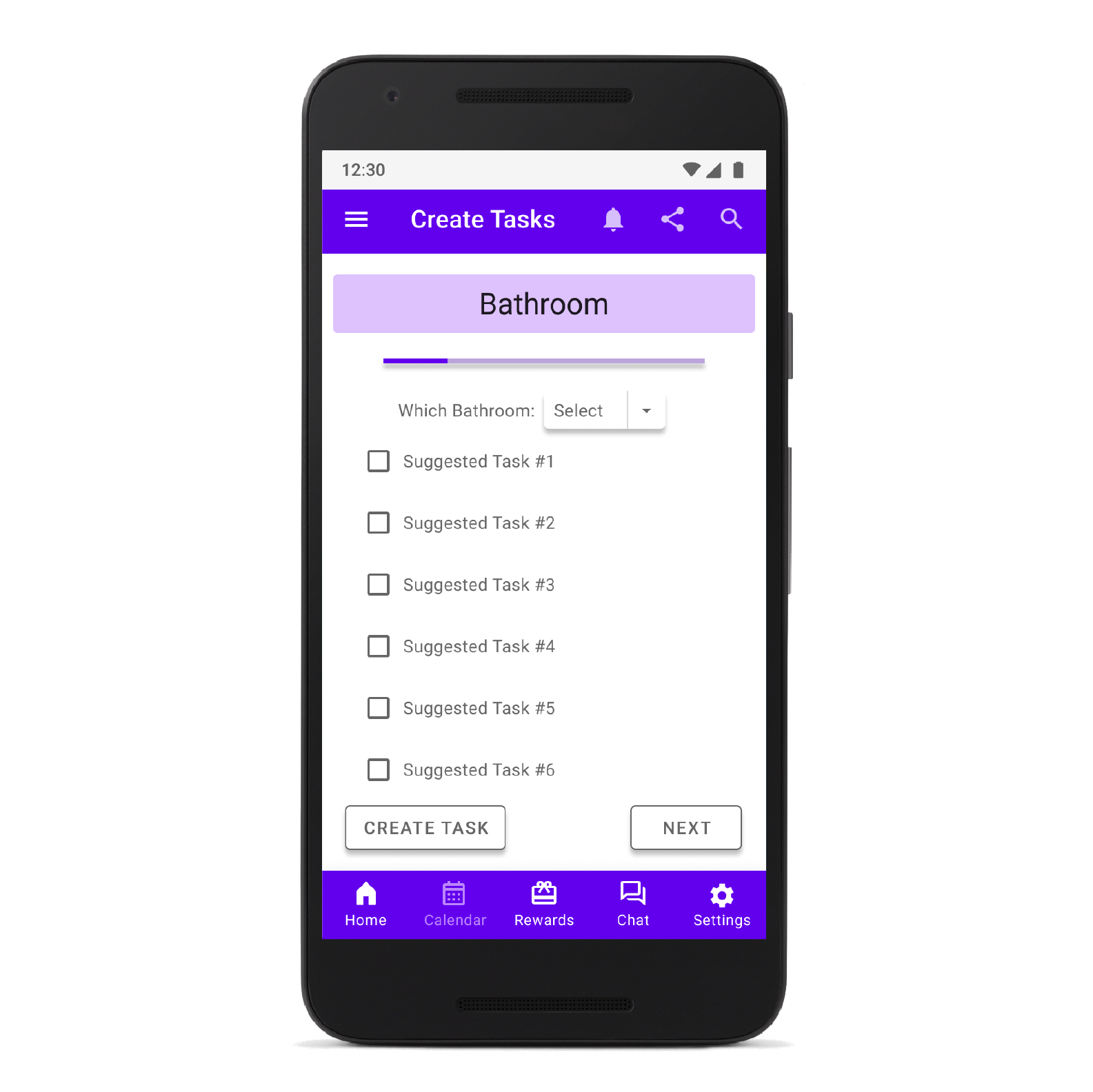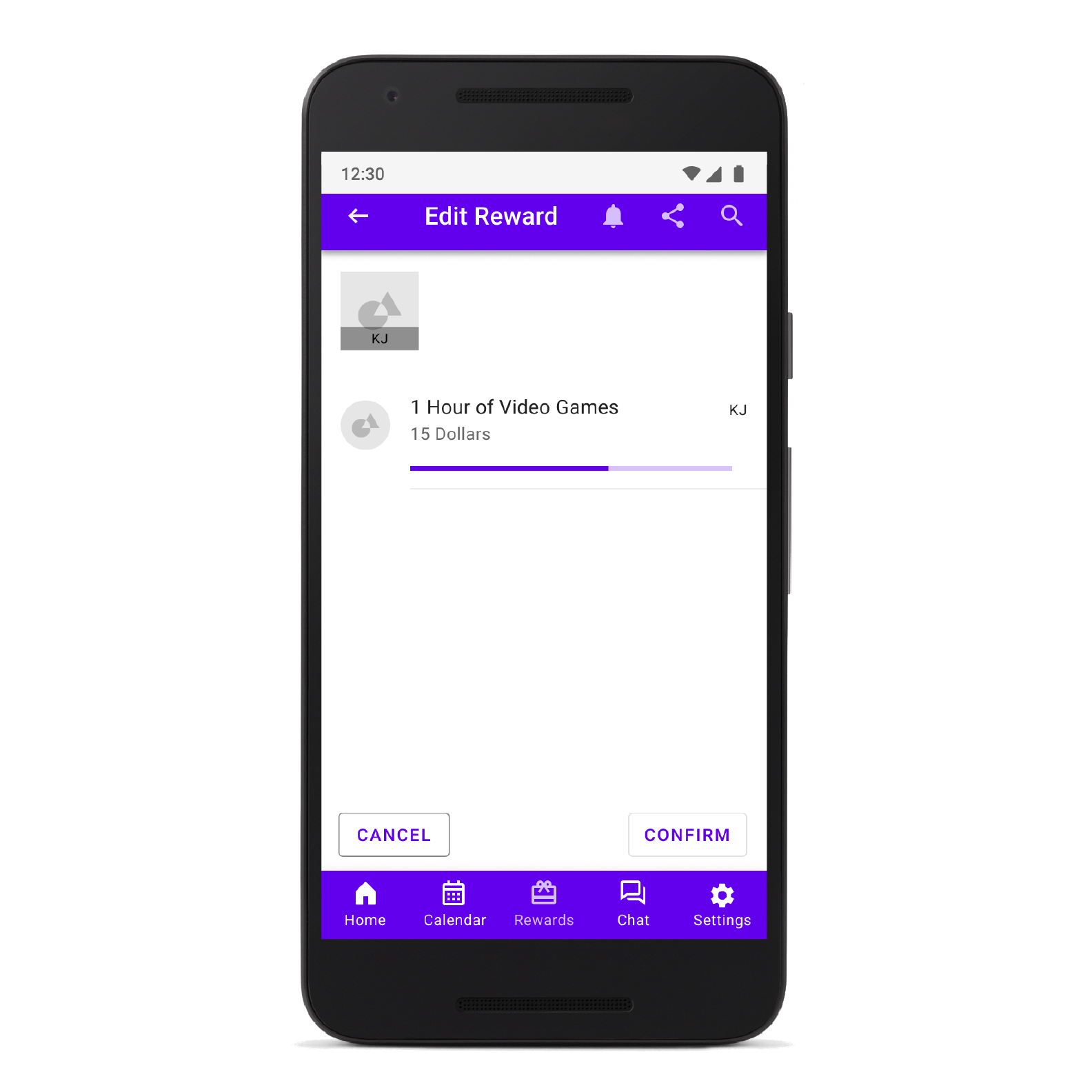En Masse
Project information
- Category: App design
- Client: Imaginary startup, "En Masse"
- Project date: February, 2021
- Conducted as part of Georgia Tech UX/UI BootCamp
Introduction
In this three week sprint, we were tasked with researching, prototyping, testing, and validating an idea for a brand-new mobile application that solves a need in users' everyday lives. I worked with two teammates throughout the project; Sylvia McCoy, and Sabrina Slater.
After a lot of brainstorming, our team decided that the biggest pain in our everyday lives is household chores and properly sharing tasks with our families or partners. En Masse: Clean as a group, is designed to create and maintain a household chores schedule with increased accountability for all members by rewarding chore completion.

User Research
Proto-Persona
We began our research phase by developing a proto-persona. We imagined Debby Robins, a 34 year old woman with a husband and two young children. Debby likes to keep a clean house, but has been having trouble keeping up with the clutter and getting everyone to pull their weight. She doesn't like having to nag her family to clean, and they are not able to afford a housekeeper.

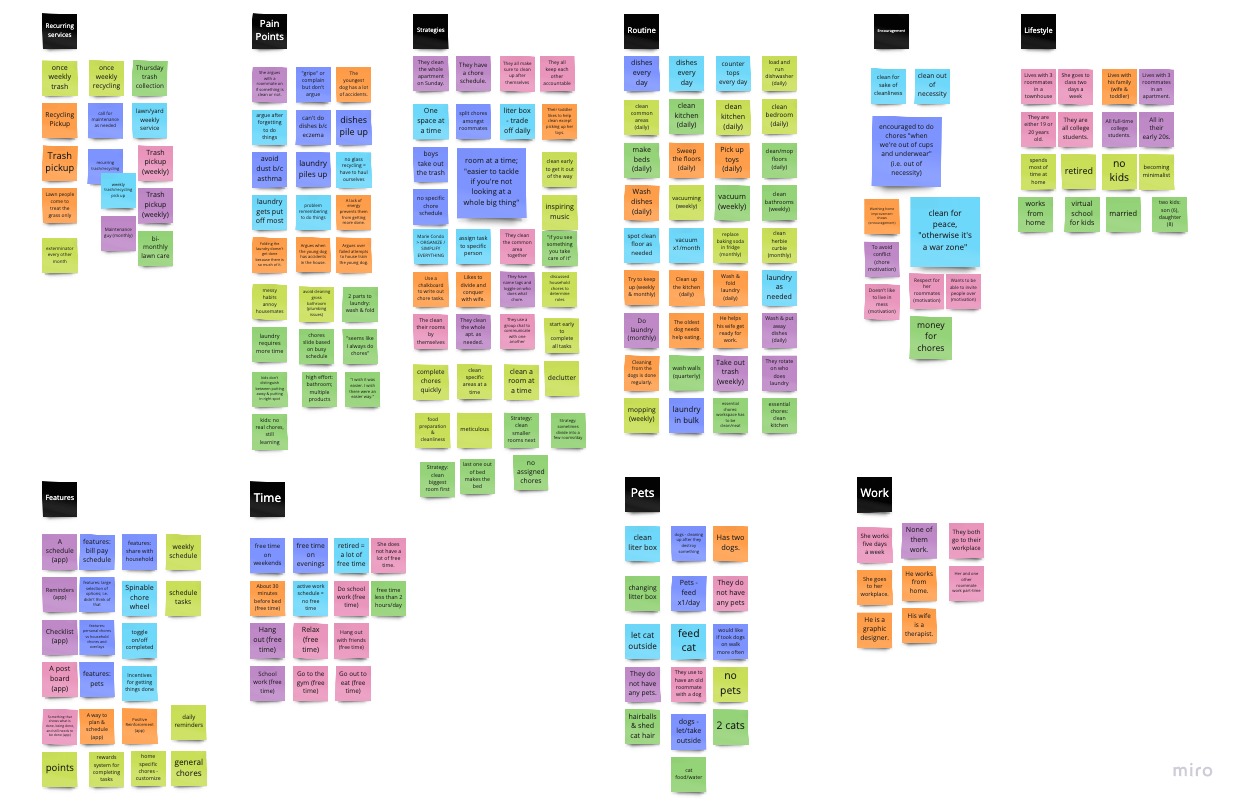
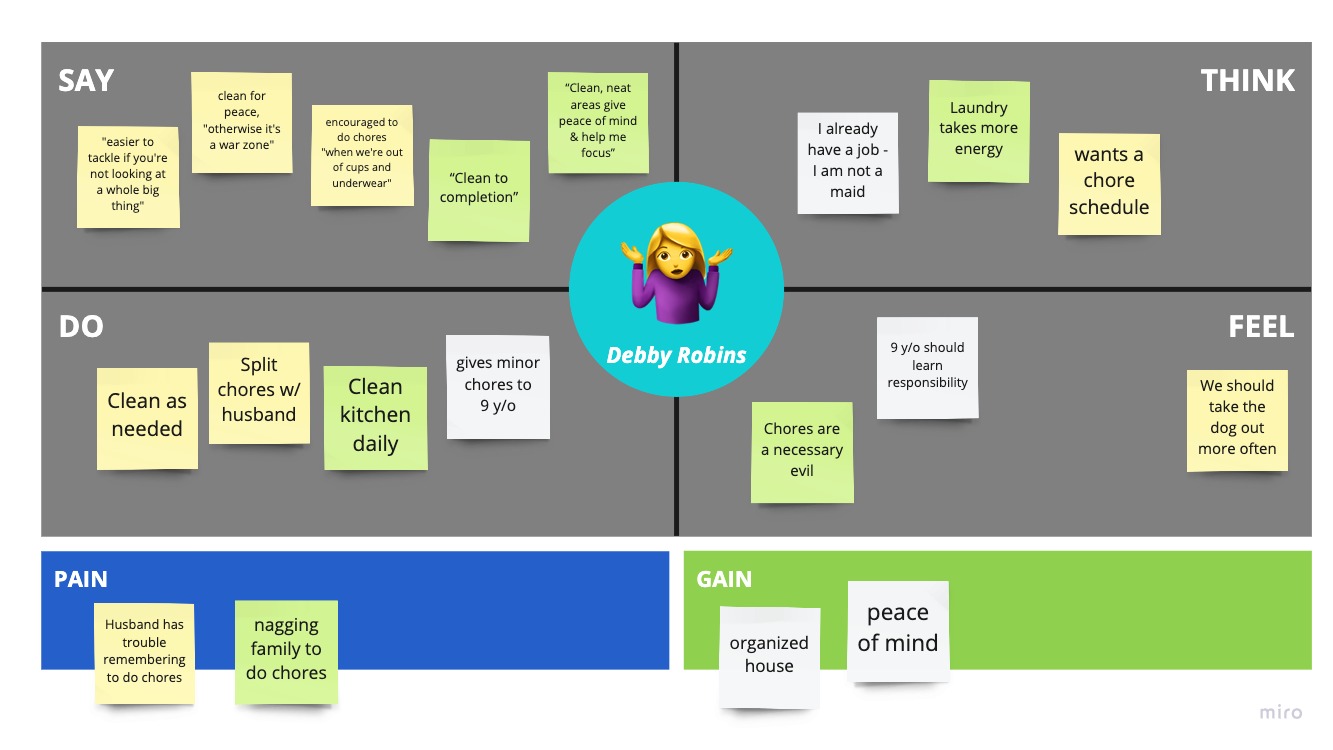
User Interviews
Next, we created an interview plan. We conducted six user interviews both in person and virtually. Each interview consisted of 13 qualitative questions about the user's current household and chore procedures, plus unscripted follow-up questions where appropriate.
Goal: Discover how households of 2+ people conduct house chores, and how it can be improved.
Research Objectives:
- Learn about the user's current household
- Learn about the user's routine
- Discover user pain points.
Hypothesis: Chores are a source of conflict between members of any given household and can be alleviated with better structure, organization, and positive reinforcement.
User Insights
We reviewed our interview notes as a team, and created an affinity map in order to identify data trends. After better understanding our data, we expanded on our proto-persona by creating an empathy map aligned with our user research.
Overwhelmingly, we found that most users:
- Clean out of necessity and / or to avoid conflict with housemates
- Tend to tackle a single task or area at a time to avoid feeling overwhelmed
- Prefer to divide chores amongst household members
- And DO NOT have a formal chore schedule, but do think that would help their situation
User Survey
We also created a survey and each shared on our personal social media channels as well as our class Slack channel. The survey consisted of 13 quantitative and qualitative questions, and we received 400 responses.
Some key takeaways from the survey:
- Most users have four or more people living in their home, and most users live in a home of 1,200 square feet or less. This emphasizes that keeping the limited common spaces clean is a point of tension.
- Most households (88.8%) do all of the housework themselves and don’t receive any outside help
- Most households (87.8%) have some pet - cat, dog, or other small pet
- Unsurprisingly most people listed laundry and/or dishes as the least favorite chore
- The top ways users would be encouraged to complete their chores are through: divide and conquer, positive reinforcement, chore schedule, reward system, notifications/reminders, and an alarm.
How many people live in your household?

Any impediments preventing you from doing chores?
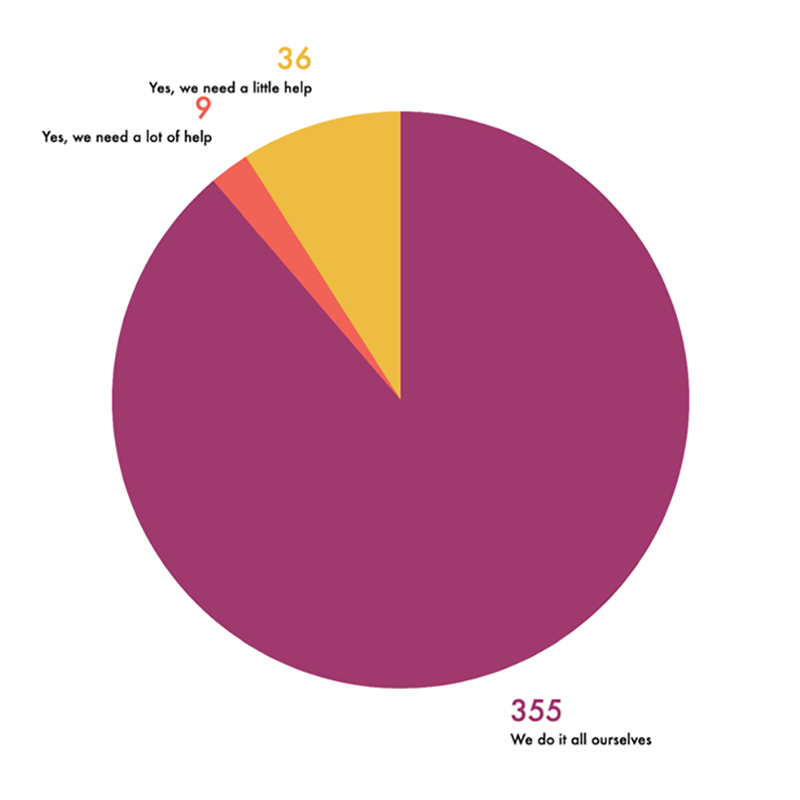
Approximate square footage of living space?

Do you have any pets?
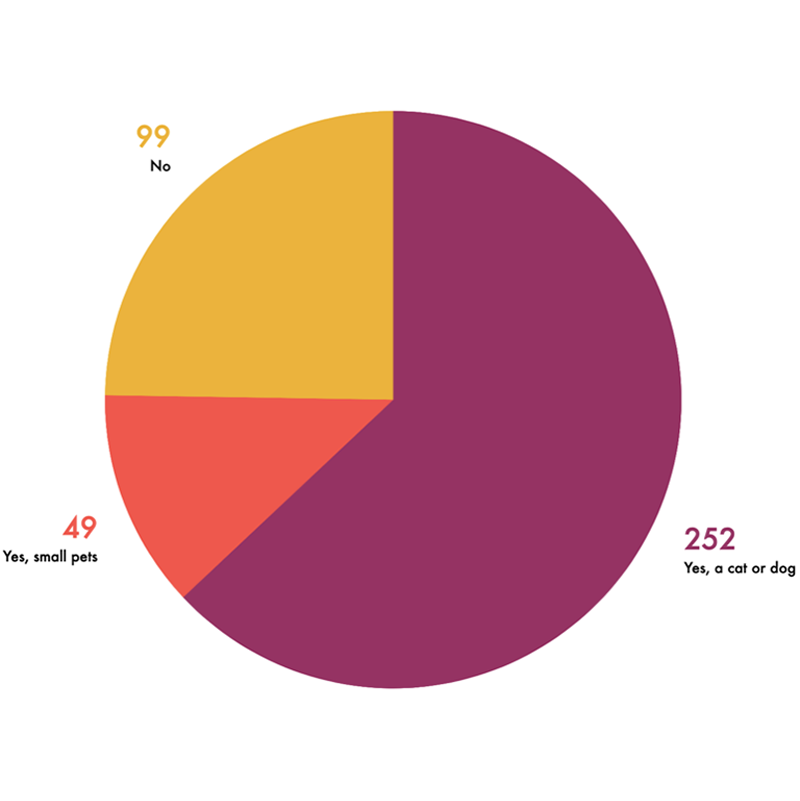
What would encourage you to complete chores?
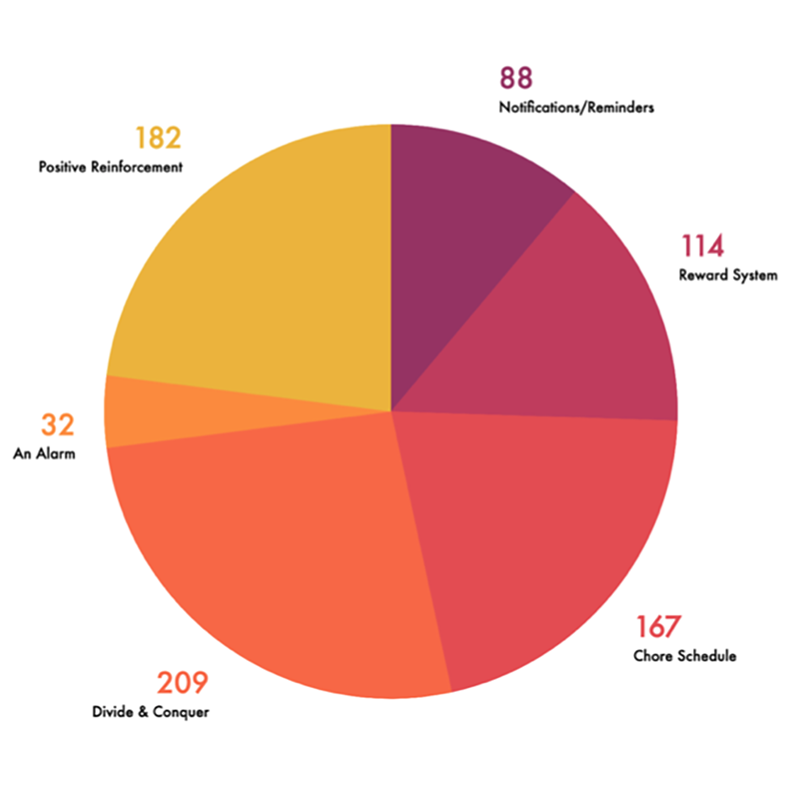
Defining the Problem
Next, we continued to expand our User Persona and created a Storyboard. This helped us to define our Problem Statement, User Insight, and Solution.
Problem
The average household does not have a formal chore schedule to maintain the home which leads to mess pile-up, discouragements, and arguments.
Insight
Users are more encouraged to complete chores when they share responsibilities with members of their household, receive positive reinforcement, and maintain a schedule.
Solution
En Masse is designed to create and maintain a household chore schedule with increased accountability for all members by rewarding chore completion.
How might we improve household members’ lives by increasing efficiency, alleviating tensions, and increasing leisure time?
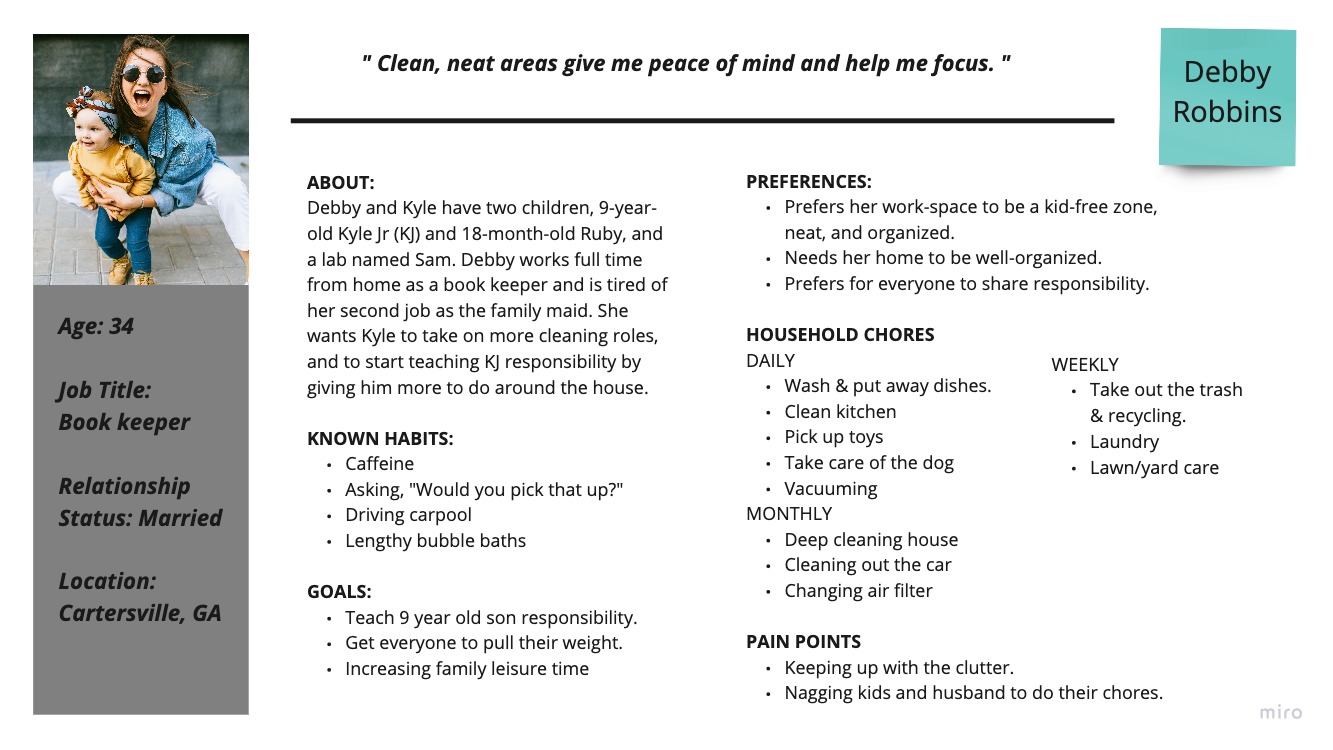
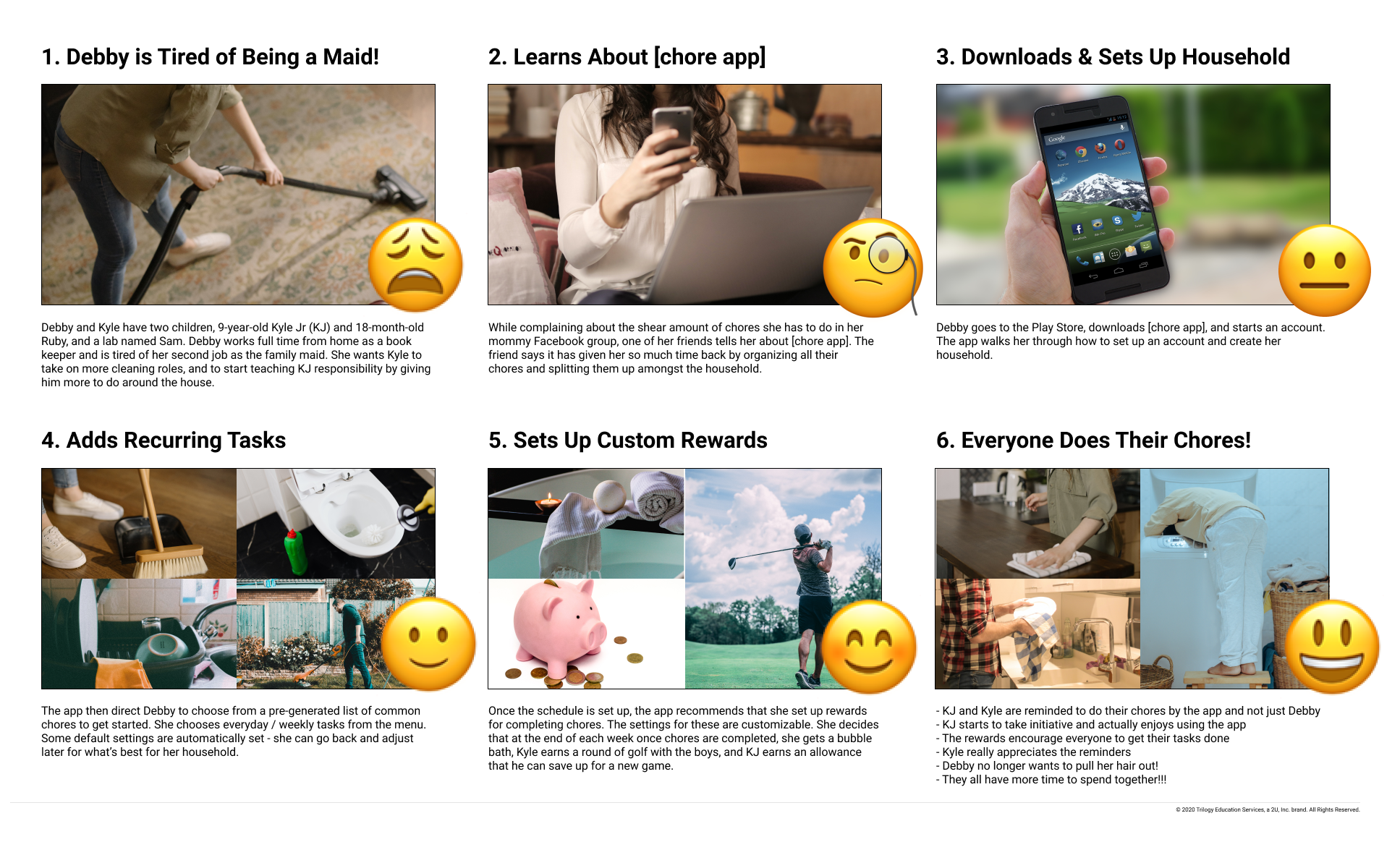
Prototyping & User Testing
Competitor Analysis
Before starting our prototype, we conducted a robust competitor analysis. We divided and conquered 6 direct competitors of other chore apps, and 4 indirect competitors that had features similar to what we wanted to include (a literal chore wheel, an allowance bot, and two task organizing apps).
We took a bunch of screenshots to share with each other, and labeled features we wanted to highlight with virtual sticky notes. Then we created a competitor feature matrix to find trends amongst the apps, conducted an "I Like, I Wish, What If?" exercise to brainstorm ideas for app features, and created a Feature Prioritization Matrix to help us narrow our scope.

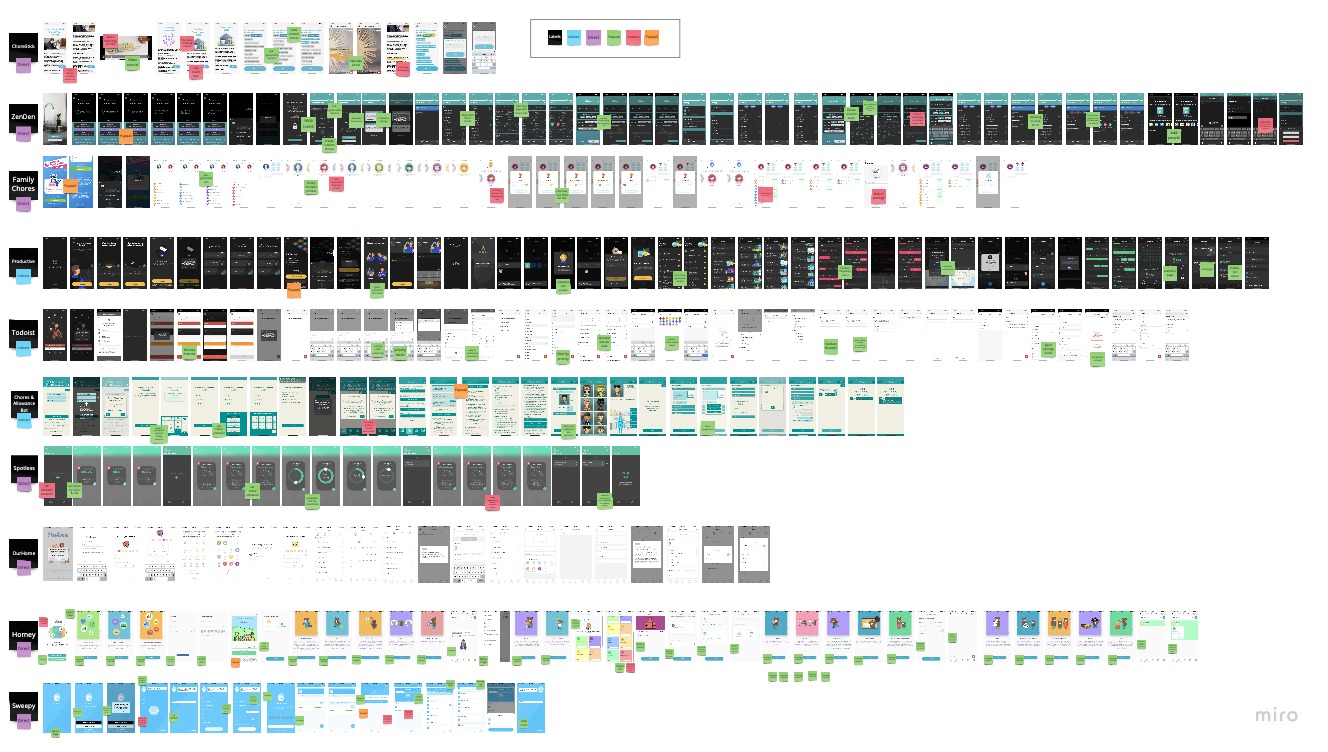
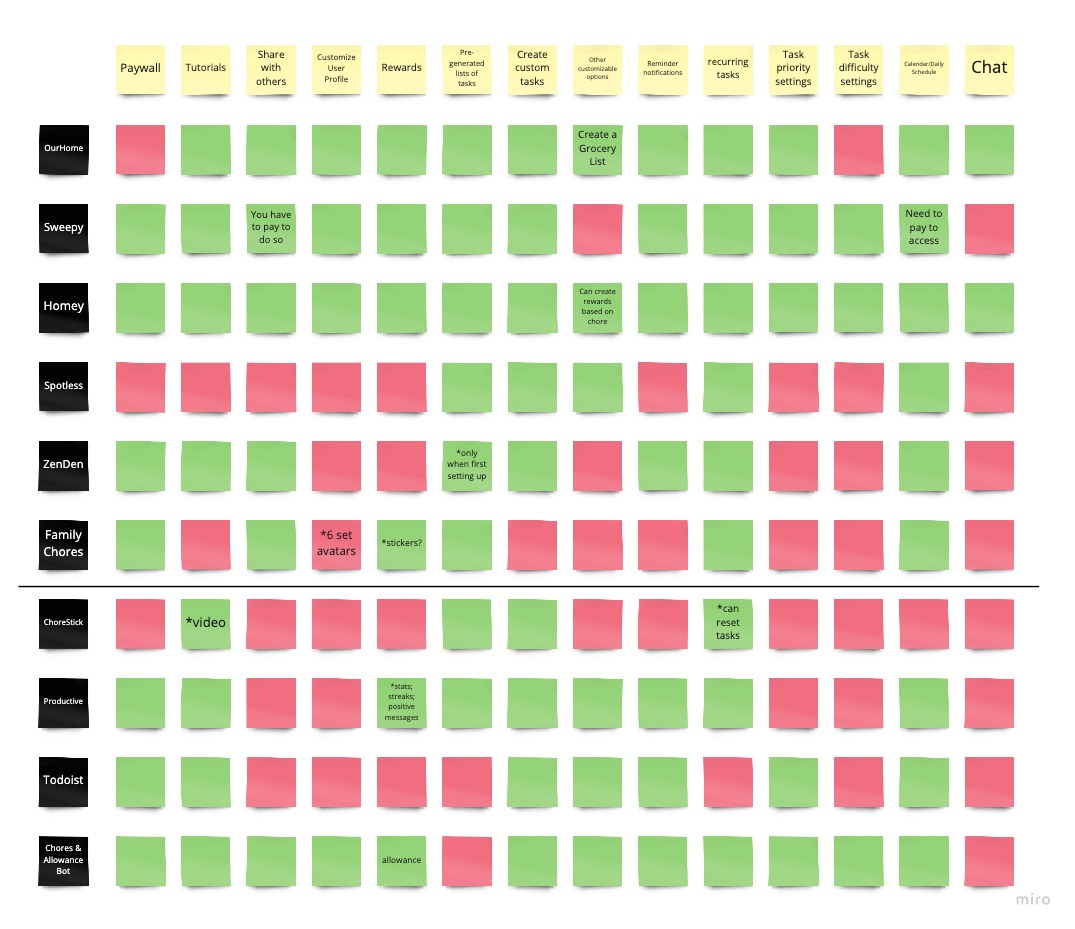
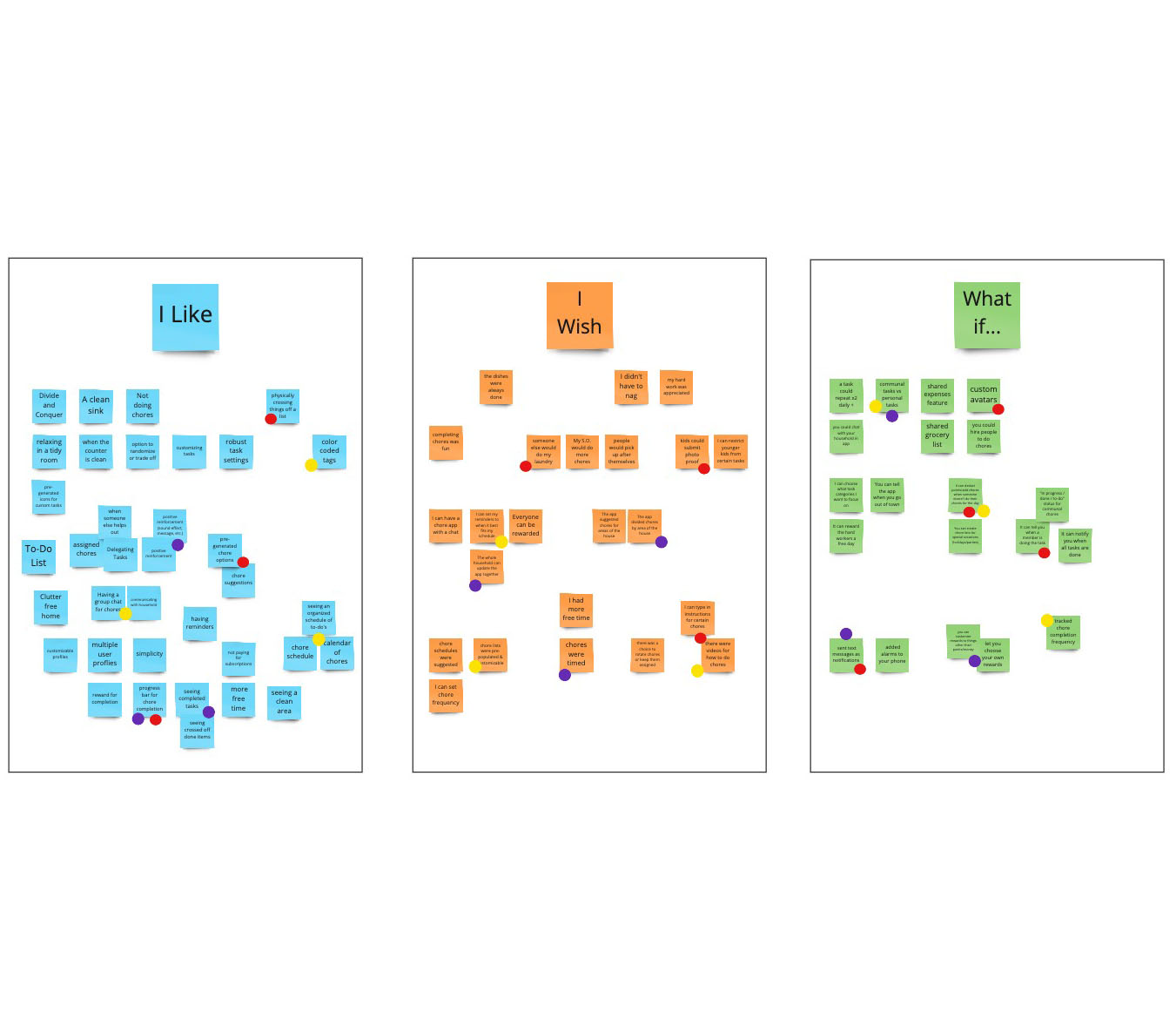
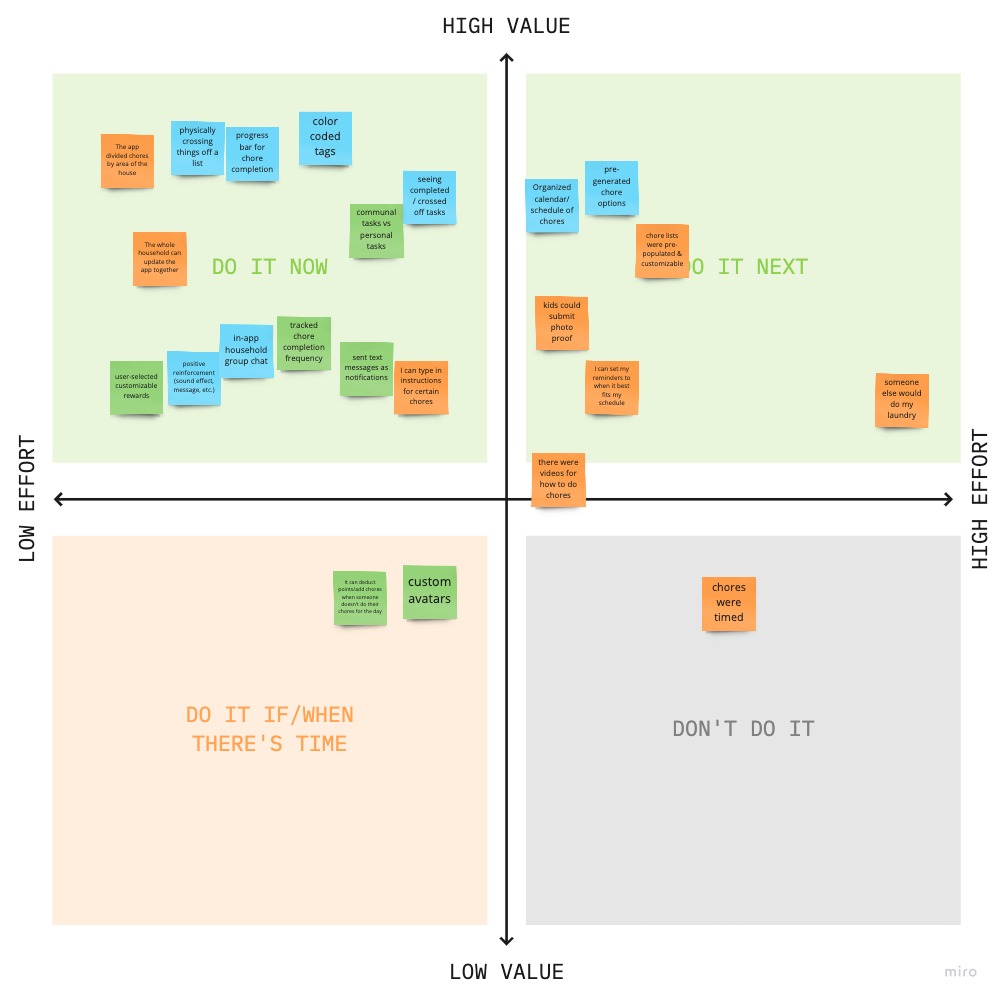
User Flow 1.0
We split up our user flow to divide and conquer - much like in our app. The three main flows are:
1. Standard Onboarding + Create Household
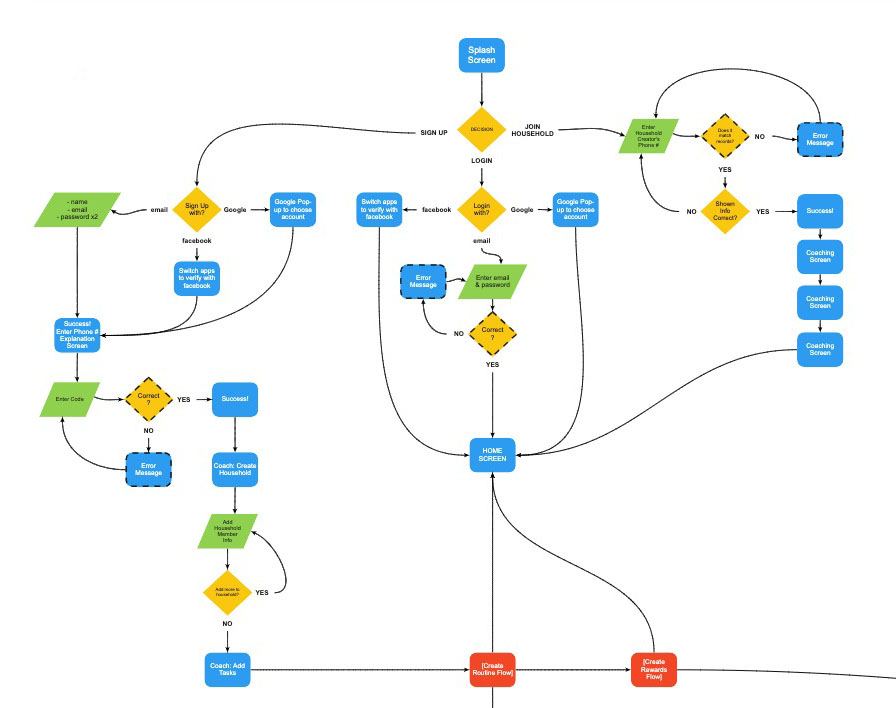
2. Create Tasks
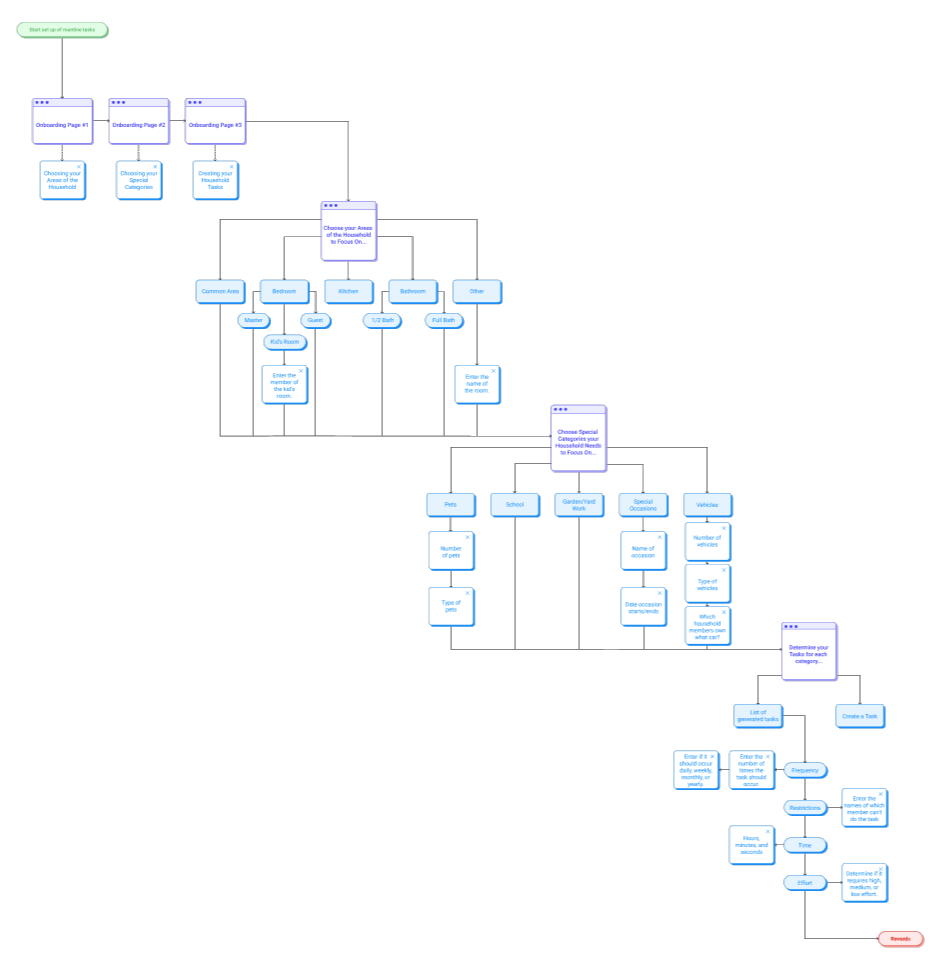
3. Create Rewards
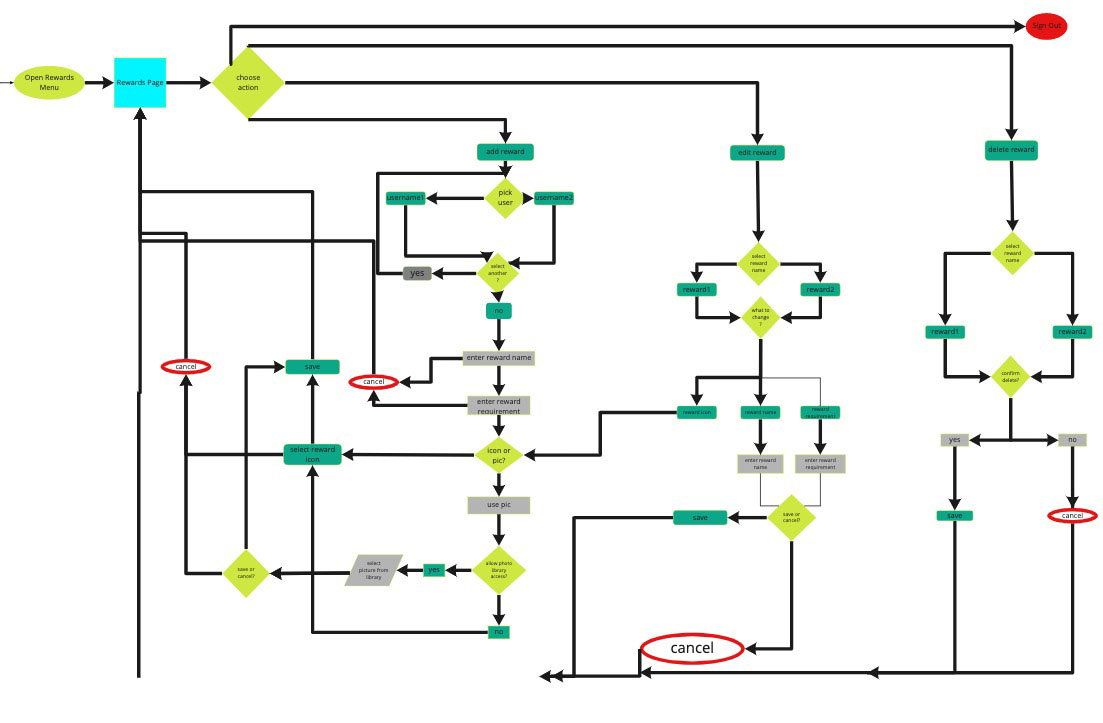
Wireframe Sketching
Then we moved into sketching wireframes and making those sketches a clickable prototype for usability testing.


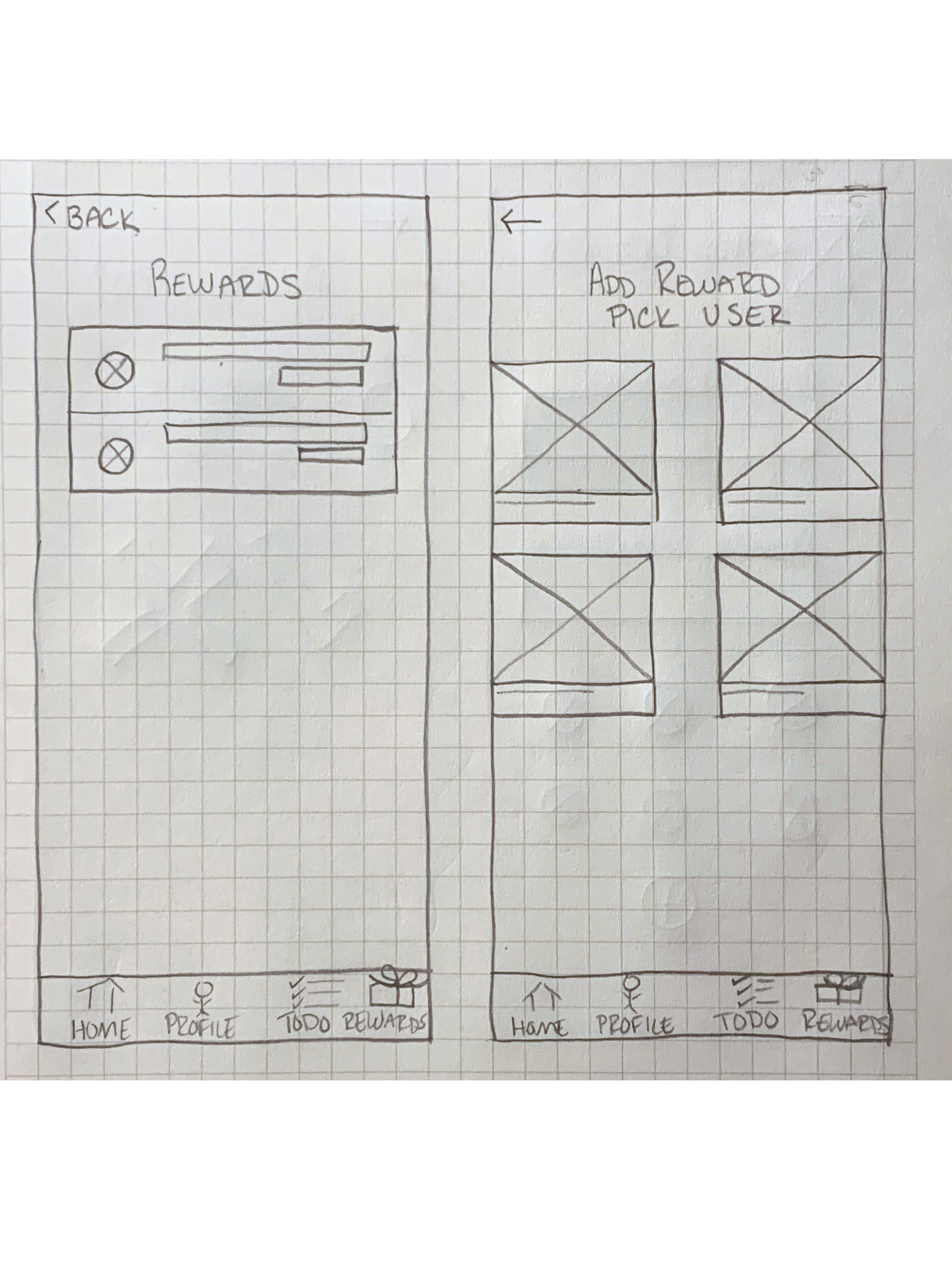
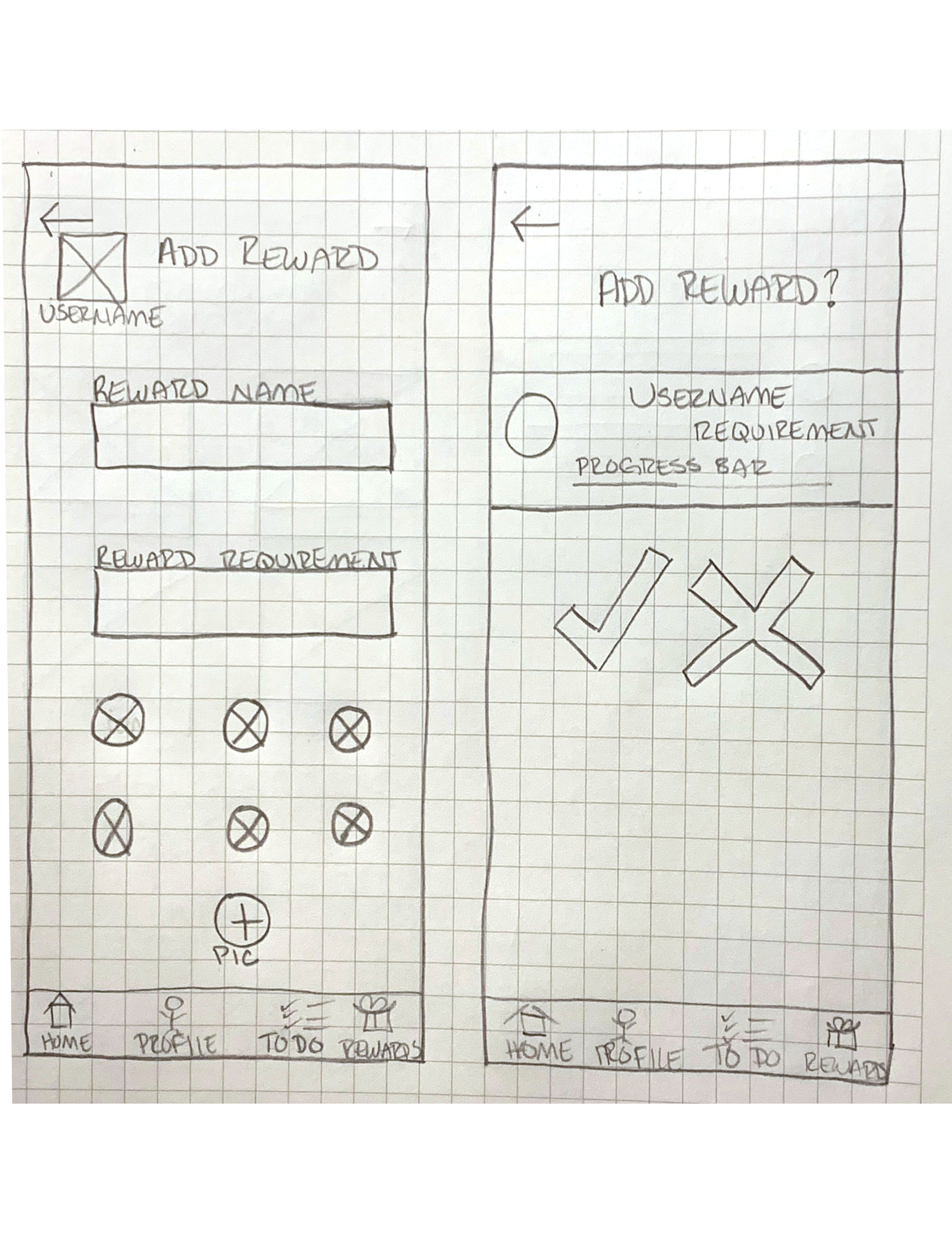

User Testing & Analysis
Our usability testing plan consisted of 3 user tests with 6 tasks.
- Onboarding with email
- Adding users to household with text message invite
- Adding tasks to household schedule
- Adding reward
- Editing reward
- Deleting reward
We then analyzed our testing results with another Prioritization Matrix.
Key takeaways:
- Streamline tasks & processes to maximize usability
- Edit categories to make task assigning process more intuitive
- Make formatting consistent
- Remove extra steps in edit reward process
- Increase options for editing tasks & creating rewards for multiple members of household
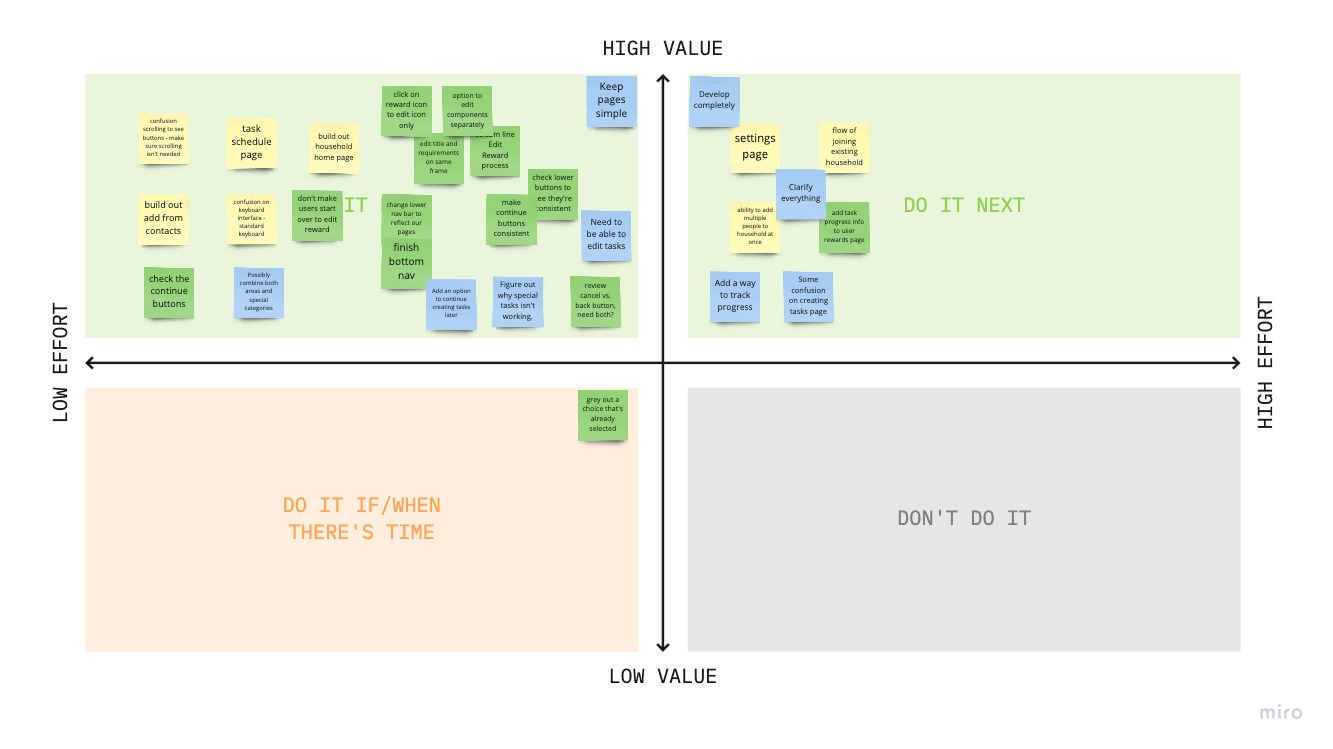
User Flow 2.0
Before continuing on with a new medium-fidelity prototype, we adjusted our user flow in accordance with our user testing results, and general feedback. We also standardized the format and connected our three original flows.
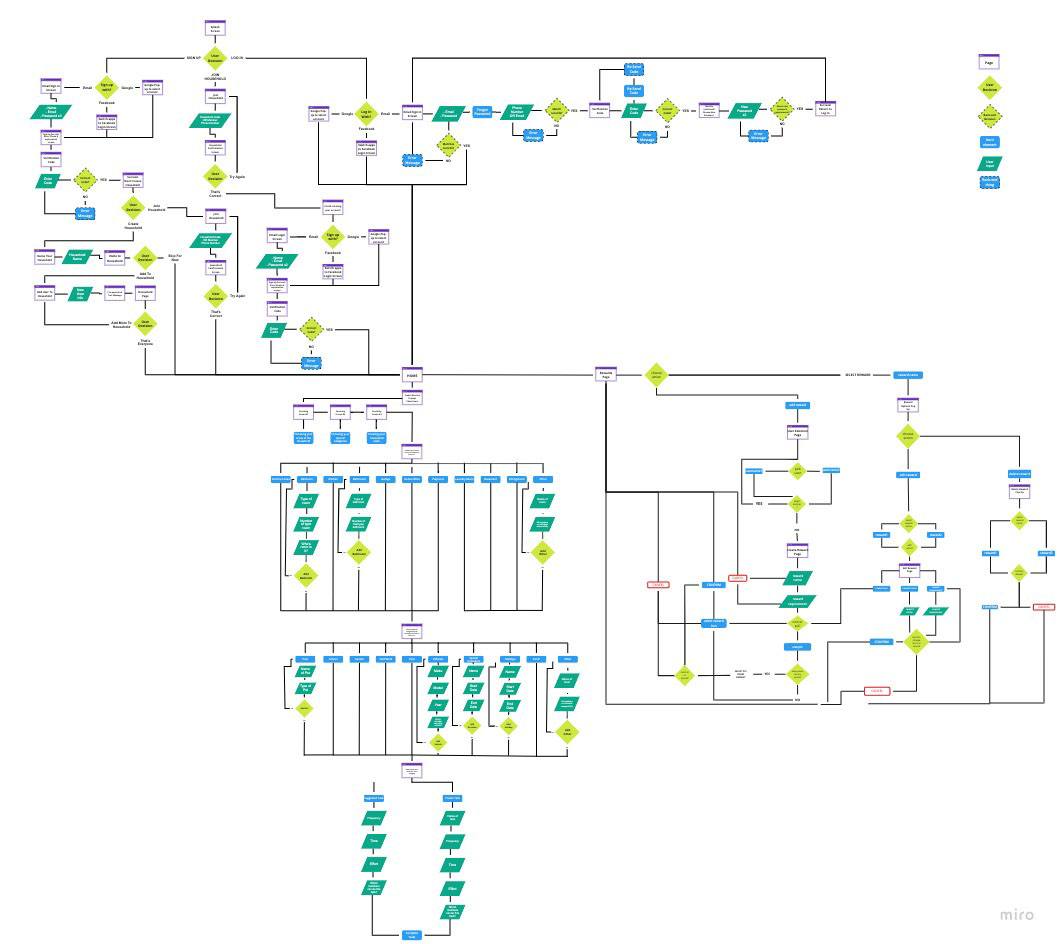
Final Prototype
Our final deliverable was a material design, medium-fidelity, prototype. Play the video below to see a quick walkthrough of the app. Or, if you prefer, scroll to the end of this page to access our clickable prototype.
Final Thoughts
If we were to continue developing En Masse, we would want to focus on making the app more applicable to a variety of household types, as well as generally increasing usability and defining a unique brand. We’re all spending more time at home so it’s important to make that time as pleasant as possible. En Masse is designed help households divide and conquer to quell the conflict, increase accountability and reward shared responsibilities.
Future Development
- Unique app icon
- Unique app theme
- Icons for all tasks
- Further development of main navigation pages (settings, profile, chat, rewards, calendar, home)
- Household options for kids vs roommates
- More usability testing

